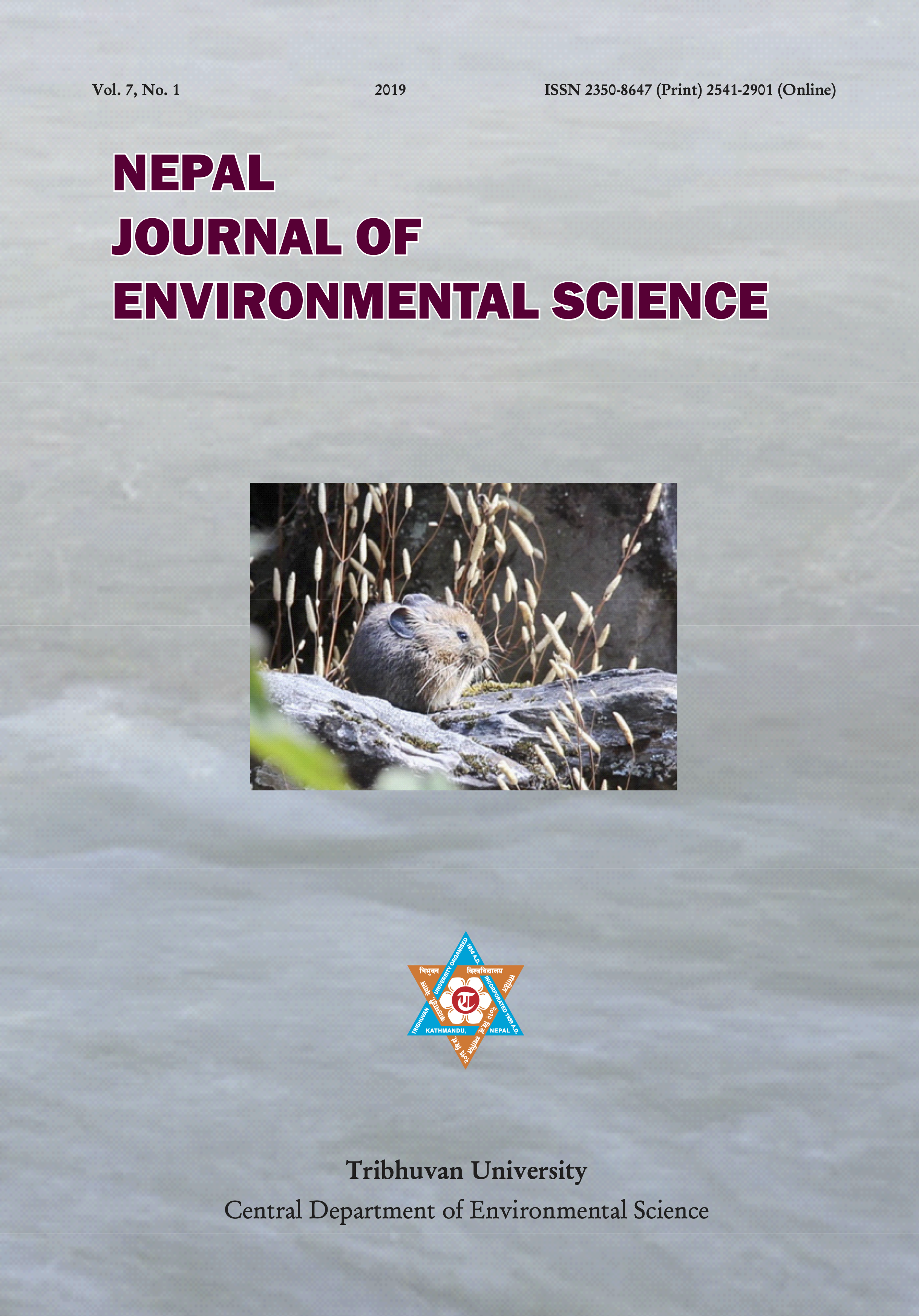Water quality assessment along the segments of Bagmati River in Kathmandu valley, Nepal
DOI:
https://doi.org/10.3126/njes.v7i0.34314Keywords:
Bagmati River, Kathmandu valley, Nepal, Water pollutionAbstract
Identification of pollution in the river helps to know the state of the river ecosystem. The study aimed to assess the water quality of the Bagmati River by analyzing the physical and chemical condition and comparing it with national and international standards. The water samples were taken from 10 different sampling sites along the length of the Bagmati River inside Kathmandu Valley, i.e., from Sundarijal to Saibubhanjyang. A total of 30 physical and chemical parameters were examined. The results showed that the pH ranges from 6.0 to 7.5 in different sampling locations. The highest dissolved oxygen (DO) (8.5 mg/L) was found at the upstream while the lowest, i.e., 3.4 mg/L and 3.5 mg/L, was found at the urban core of the valley, i.e., Teku and Thapathali, respectively. The BOD, COD, oil, and grease considerably exceeded the WHO and national generic effluent standard. Most of the heavy metals in the river water were below the range of standard. The concentrations of all pesticides were found below 10 µg/L except heptachlor exoepoxide. The highest concentration of heptachlor exoepoxide (75 µg/L) was found at Balkhu, followed by Thapathali (69 µg/L) and Teku (62 µg/L). The result showed that the middle-urbanized segment, i.e., from Gokarna to Teku, is heavily polluted than the upstream and downstream segments of the river. The results are of great significance for policy formulation and implementation of the ecosystem restoration project of Bagmati River in the Kathmandu valley, Nepal.
Downloads
Downloads
Published
How to Cite
Issue
Section
License
This license enables reusers to distribute, remix, adapt, and build upon the material in any medium or format for noncommercial purposes only, and only so long as attribution is given to the creator.

